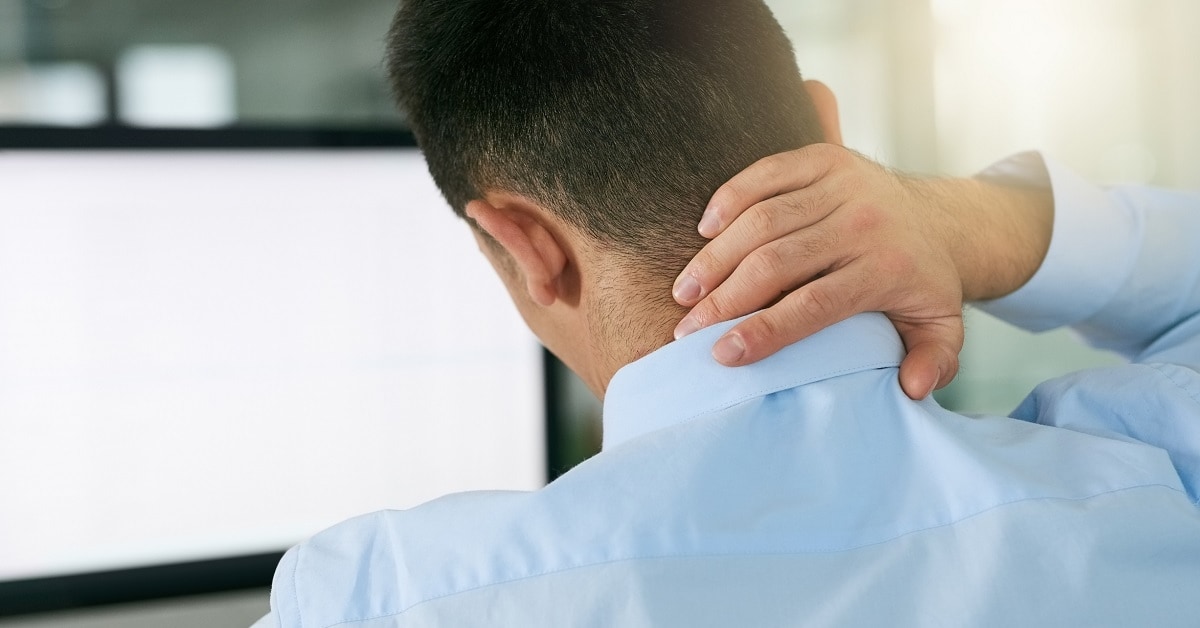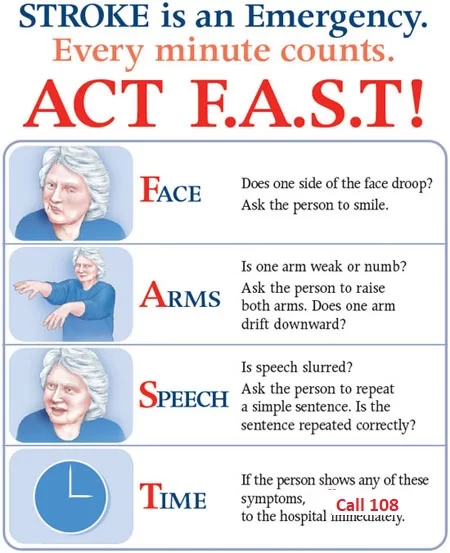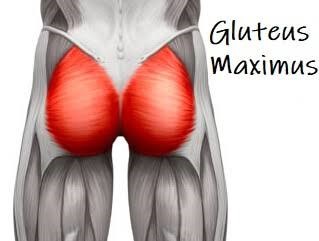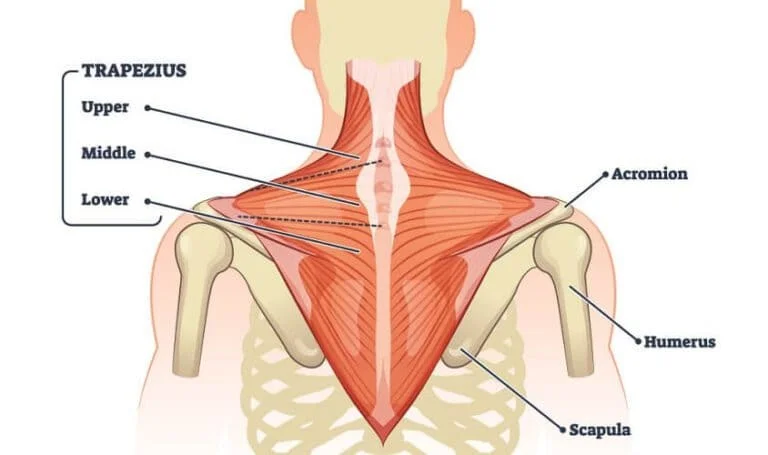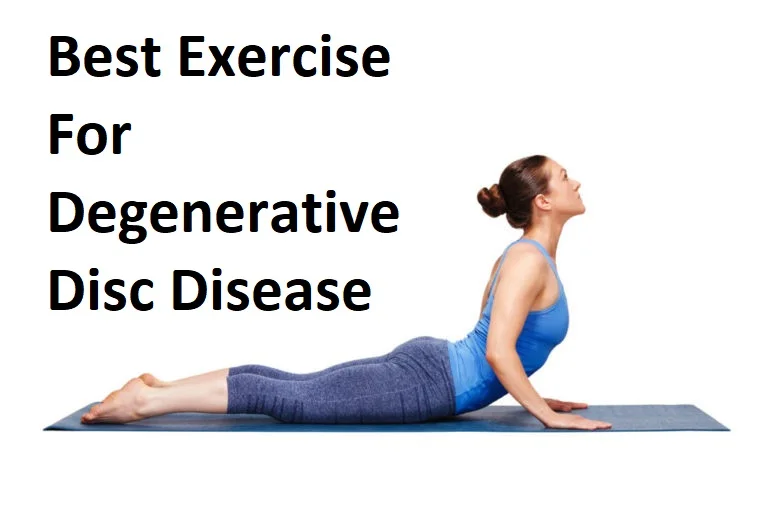Neck Muscle Tightening
Table of Contents
What is Neck muscle tightness?
- Neck muscle tightening refers to the feeling of heaviness around the neck or tightness that occurs mainly in the posterior of the neck muscles.
- when the muscles in the neck will not fully relax, which will lead to soreness, muscle spasms, & headaches. It has more possible causes, ranging from joint problems to inflamed nerves. There is numerous reason for neck muscle tightness, however, it may vary from individual to individual, it might be due to a lazy lifestyle or after a neck pain-related injury required which requires rest.
- This may sometimes lead to stiffness & neck muscle tightness. It can also be accompanied by other pains such as headache, neck pain, arm pain, or shoulder pain.
- Neck muscle tightening might be referred to as a combination of neck pressure or stiffness, soreness, and pressure over the neck
- muscles. A person may not move the neck or feel the tight muscle while moving the head over down or side to side ( right left-wing ).
- Uneasiness in the neck may be seen when you sleep over or nap in an uncomfortable position. That is because when we sleep in a new or uncomfortable position, the muscles & ligaments of the neck or cervical chine can shift & cause painful pulled muscles or loosened ligaments.
- A tightening feeling in the neck is different from the sharp or severe pain that you would feel in a condition similar to a pinched nerve.
- Poor Posture may affect the body at all times, even during the time of sleep or working. People who sleep on their stomachs tend to sleep on one side of their face on the pillow. This can overstretch the muscles on that side of the neck.
- Muscle tension is a common cause of neck muscle tightness. You can relieve neck muscle tension by gently stretching the neck muscles, which helps to improve flexibility & range of motion of the neck & will also help to prevent neck muscle tightness.
- If you Sleep with large pillows will raise the head too high, forcing the neck to bend forward. Staying in this position throughout the night may result in neck tension in the morning. There are other too many factors that contribute to neck muscle tightness.
- In this article here we discuss all the possible causes of neck muscle tightness, the anatomy of the posterior side of the neck how you can get relief from tightness with stretching exercises & posture correction.
What are the neck muscles?
- The neck muscles are part of a complex musculoskeletal system (soft tissues & bones) that connects the base of the skull to the torso. Muscles contain fibers that contract (get smaller), allowing you to perform many of different movements.
- Neck muscles consist of 3 main groups of muscles: anterior, lateral, & posterior muscle groups, based on their position in the neck. The muscles of the neck are further subdivided into more specific groups based on a number of determinants; including depth, precise location, & function. The location of a muscle or group of muscles in the neck generally relates to the function of the muscles in the neck.
- The neck muscles are part of a complex musculoskeletal system (soft tissues & bones) that connects the base of the skull to the torso. Muscles contain fibers that contract (get smaller), allowing you to perform many of different movements.
- Neck muscles consist of 3 main groups of muscles: anterior, lateral, & posterior muscle groups, based on their position in the neck. The muscles of the neck are further subdivided into more specific groups based on a number of determinants; including depth, precise location, & function. The location of a muscle or group of muscles in the neck generally relates to the function of the muscles in the neck.
The function of neck muscles
- Elevating the upper ribs so you can inhale.
- Helping with chewing, swallowing & speaking.
- Make certain facial expressions.
- Moving the head, neck & upper back, including the shoulder blades.
- Stabilizing & supporting the head, neck & spine.
Anterior neck muscles include:
- Platysma muscles
- Sternocleidomastoid muscles
- Subclavius muscles
- Scalenus muscles
- Hyoid muscles
Posterior neck muscles include:
- Superficial layer: Trapezius, splenius capitis, splenius cervicis
- Deep layer: Cervical transversospinales muscles
- Semispinalis capitis,
- Semispinalis cervicis
- Deepest layer: Suboccipital muscles:
- Rectus capitis posterior major,
- Rectus capitis posterior minor,
- Obliquus capitis superior,
- Obliquus capitis inferior
Lateral neck muscles include:
- Rectus capitis anterior muscle
- Rectus capitis lateralis muscle
- Longus capitis muscle
- Longus Colli muscle
What’s causing tightness in your neck?
The neck tightening discomfort could be triggered by many of causes including:
The poor posture habit :
The neck supports the head, & the average mortal head weighs about10.5pounds. However, the neck muscles are necessary to work in hamstrung ways to support the weight of the head. If the posture is poor. This imbalance can lead to a feeling of miserliness still, the arms & head will be deposited toward the front of the rest of the body for extended ages of time, causing the cervical muscles to contract.
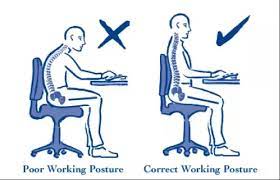
The improper computer desk :
If you spend long hours sitting in front of a computer, the arms & head will be positioned toward the front of the rest of the body for extended periods of time, causing the cervical muscles to contract. This might cause tightness in the neck &, eventually pain.

The cell phone :
If you are hunkered over the phone checking social media & keeping the cervical spine in the tilted position it will lead to neck muscle tightness.
The purse strap :
Using a shoulder swatch to carry a heavy bag, briefcase, or trip luggage can put an unwanted strain on the neck muscles which can lead to the feeling of miserliness.
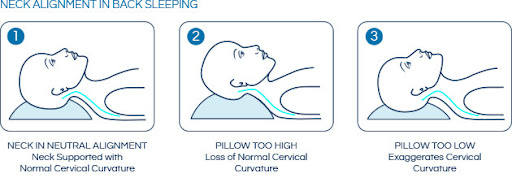
The sleep habits :
Try to sleep with the head & neck aligned with the rest of the body. Consider sleeping on the reverse with a pillow under the knees & avoid pillows that elevate the neck too much.
The TMJ (Temporomendibular joint ) :
Temporomandibular joint (TMJ) disorder is typically associated with jaw & facial discomfort, but it can affect the neck as well.
Stress :
Psychological stress can cause tension in the neck, giving it a tightening feeling.
Your working place :
If the job requires you to perform repetitive movements with the arms & upper body, it may affect the muscle of the neck.
Many people experience neck pain or stiffness occasionally. In many cases, it was due to poor posture or overuse of a muscle. Sometimes, neck pain is caused by injury due to falls, contact sports, or whiplash. Most of the time, neck pain isn’t a serious condition & can be relieved within a few days. But in some cases, neck pain will indicate serious injury or illness.
Other possible causes of neck muscle tightening are as follows:
- Poor posture
- Meningitis
- Working at an office for prolonged without changing the position
- Rheumatoid Arthritis
- Fibromyalgia
- Cervical Spondylosis
- Herniated Cervical fragment
- Cervical Spinal canal stenosis
- Sleeping with the neck in a bad position
- Jerking on the neck during exercise
- Hemiplegia or other paralysis-related condition
- Injury to the neck or cervical spine fracture (post-traumatic injury)
Symptoms of Neck muscle tightness:
- Mostly in Neck muscle tightness, you feel heaviness around the Neck & Difficulty in moving the Neck.
- However, the following are the associated symptoms seen in severe cases.
- Muscle tightness
- Neck Paraspinal muscle spasms
- Neck stiffness with Headache
- Difficulty turning the head in certain directions
- Neck pain that worsens in certain positions
- Weakness
- Impassiveness
- Chinking
- Incapability to move the arms
- Incapability to touch the chin to the casket
Treatment of Neck muscle tightening:
- Stretching exercises & strengthening exercises are important treatment in Neck muscle tightening, if you have associated symptoms like pain, spasms of neck muscles following treatment are also helpful;
- use of cold pack & heat pack
- Muscle relaxants if muscle spasm is present
- Pain reliever medication
Home Remedies :
- In addition to the stretches & exercises, a person can relieve neck tension with rest, over-the-counter (OTC) medications, &lifestyle changes.
- The following remedies might help you to manage neck tension.
- Applying a cold pack to reduce pain & inflammation surrounding the neck.
- Applying a hot pack to help relax tense neck muscles.
- Take OTC pain relievers to ease mild-to-moderate muscle pain.
- Take an Epsom salt bath.
- Practicing stress management & relaxation techniques, such as meditation & yoga.
- Exercising regularly
- Getting a massage around the neck.
- Switching sleeping positions & using pillows that support the neck without overextending it.
Neck Muscles Exercises for Neck muscle tightening:
Neck muscles exercise mainly of two types:
- Neck muscles strengthening exercise
- Neck muscles stretching exercise
Neck muscles strengthening exercise
Chin tuck Exercise:
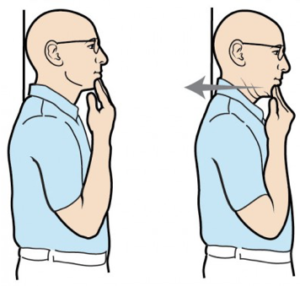
- Sit straight & look straight ahead with the ears directly over the shoulders.
- Put a two to three finger on the chin.
- Without moving the finger, pull the chin & head straight backward until a good stretch is felt at the base of the head & top of the neck.
- Hold for 5 to 10 secs. Repeat seven to ten times.
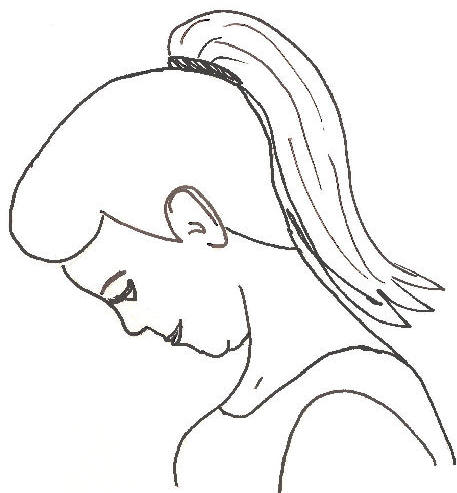
Neck flexion Exercise (Neck tilt)
- In Relax sitting position flex the head down to rest the chin on the chest (Flex the neck fully).
- Gently tense the neck muscles & hold for 4 to 8 secs.
- Return to a initial position & repeat ten times.
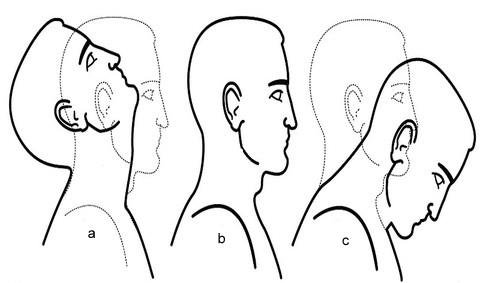
Neck extension exercise:
- In Relax sitting position without arching the back, slowly move the head backward so you are looking upward.
- Hold for 5 to 10 secs. Return to starting position.
- This is a good exercise to do during working hours to prevent neck strain.
- Gently tense the neck muscles & hold for 5 to 10 secs.
- Return to a neutral position & repeat 10 times.
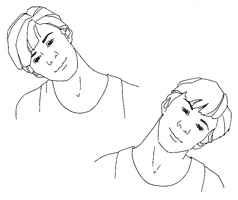
Neck flexion Exercise (side to side)
- Flex the head down towards the shoulder, & try to touch the shoulder with the ear (Without elevating the shoulder).
- Gently tense the neck muscles & hold for 8 secs.
- Return the head to a neutral position & repeat in the opposite direction.
- Repeat 10 times on both sides.
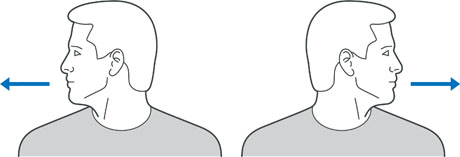
Neck Rotation exercise
- Rotate the head towards one side, keeping the chin at the same height & moving within comfortable limits.
- Gently stretch the neck muscles & hold for 8 secs.
- Return the head to the neutral position & repeat in the opposite direction.
- Repeat 10 times each on both sides.
Prone Cobra Exercise
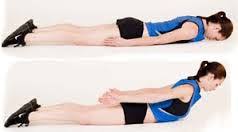
- This exercise is done by lying face downwards on the ground & uses gravity as resistance in the reinforcing process.
- Lying face downwards on the floor, put the forehead on a rolled-up hand towel for comfort.
- Place the arms by the side, and palms downwards on the ground.
- Touch the tongue on the upper palate of the mouth.
- Pinch the shoulder blades together & raising the hands off the ground.
- Roll the elbows inwards, palms outwards, & thumbs upwards.
- Gently raise the forehead about an inch off the towel keeping the eyes looking straight forward at the ground
- Hold the position for 7 to10 secs.
- Do10 repetitions.
Isometric Neck Exercise
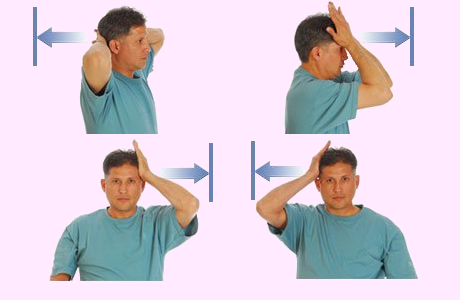
- Isometric neck exercise helps to strengthen the neck muscles. This exercise is mostly recommended by Physiotherapists from day 1st to relieve Neck pain.
Isometric Neck Exercise
How to perform this exercise In a sitting Position, - keep the Body straight, Put both hands behind the neck (as seen in the images), & try the neck to push pressure on the hands & At the same time Resist the neck muscles, both hands maintain align position for 4 to 5 secs & then relax.
The first day does 8 repetitions & the second day 10 repetitions. Do some exercise on the forehead & each side of the neck.
Do the exercise by pressing on the side of the head. Repeat 8 times, then alter sides.

Prone Rows Exercise:
- Lie on the stomach with the arms dangling off the side of the bed (try angling the body so the head is facing the corner of the bed).
- Use a pillow under the stomach for comfort. Begin by pulling arms back while bending elbows & squeezing shoulders blades together then slowly return to the initial position.
- Do not lift the head up while pulling the arms back.
- Repeat 20 times. Perform 2 times a day.

Standing pushups exercise:
- Stand about an arms-length down from the wall with the bases spread piecemeal.
- Place the hands on the wall, making sure that the parallel with the shoulders.
- Keeping the reverse straight, sluggishly bend or flex the elbows, bringing the upper body toward the wall.
- Unbend or extend the elbows & return to the starting position.
- Repeat 20 times. Perform 2 times a day.

Lateral extension exercise :
- Start by looking straight ahead. Slowly lean the head to the left side. Use the left hand for resistance, use the muscles in the neck to press against it. Hold for 5 to 10 secs, then return to the initial position.
- Then, slowly lean the head to the alternate side. Hold for 5 to 10 secs.
- Return to the initial position. Do 10 repetitions. This is a good exercise to do while in working hours, especially if you have to keep the head in a steady position for prolonged periods, as in working at a computer. Do this exercise every half hour to prevent neck strain.

Tilted forward flexion exercise:
- Sluggishly lean the head to the leftism. Using the left hand for resistance, use the muscles in the neck to press against it. Hold for 5 to 10 secs, also return to starting position.
- Also, sluggishly lean the head to the other side. Hold for 5 to 10 secs.
- Return to starting position. Do 10 repetitions. This is a good exercise to do during work, especially if you have to keep the head in a steady position for a prolonged time as in working at a computer. Do this exercise every partial hour to help with the prevention of neck tightening.
Trapezius Strengthening exercise:
- First, place the knee joint on a bench or chair.
- Try to lean forward so that the hand is reached the bench & also help to support the weight.
- The other hand is placed at the side & palm facing the body.
- Try to raise the arm & rotating the hand to the thumbs-up position.
- Stop this exercise when the hand is at shoulder height & the arm is parallel to the floor.
- Slowly lower the arm to the original position for a count of five.
- Do this exercise 2–3 times per day.
Neck Muscle Stretching Exercise
Splenius capitis muscle stretch:
- The right side splenius capitis is stretched by flexing, left laterally flexed, & right rotating the head & neck at the spinal joints, while the left-the-side shoulder girdle is allowed to elevate.
- You can hold for 30 secs & 3 repetitions.
Splenius cervicis muscle stretch:
- Stand/sit upright
- Keep the head up facing straight ahead
- Push the head forward side by sticking out the chin
- Note: Keeping the head up during this stretch. Do not let the chin fall towards the floor.
- You can hold for 30 secs & 3 repetitions.
Trapezius muscle stretch:
- Slowly take the right ear toward the left shoulder. It’s natural for the right shoulder to lift as you do this. If that happens, ease the head back toward the center until you can relax the left shoulder back down.
- Gently release this side, & then ease the right ear toward the right shoulder & complete the stretch on the opposite side, breathing deeply through it.
- You can hold for 30 secs & 3 repetitions.
Semispinalis capitis muscle stretch:
- The semispinalis capitis muscle (of the transversospinalis group) is stretched by flexing the neck and head at the spinal joints. Adding in lateral
- flexion (not seen in the accompanying illustration) will raise the efficacy of the stretch for the opposite-side semispinalis capitis muscle.
- You can hold for 30 secs & 3 repetitions.
Splenius cervicis muscle stretch:
- The right-side splenius cervicis muscle is stretched by flexing, left laterally flexing, & right rotating the neck at the spinal joints, while the right-side shoulder girdle is allowing to elevate.
- You can hold for 30 secs & 3 repetitions.
Suboccipital Muscle Stretch:
Manual Stretching
Patient position & procedure: Sitting
- How to do:
- Identify the spinous process of the 2nd cervical vertebra & stabilize it with the thumb or with the 2nd metacarpophalangeal joint (& the thumb & index finger surround the transverse processes). Tell the patient slowly nod, doing only a tipping movement of the head on the upper spine.
- Guide the movement by placing the alternate hand across the forehead of the patient.
- You can hold for 30 secs & 3 repetitions.
Patient position and procedure: Supine
- How to do:
- Sitting on a stool at the head of the patient table with the forearms resting on the table. One hand stabilizes the C2 vertebra by holding the transverse processes between the proximal portion of the thumb & index finger; the opposite hand supports the occiput. Nod the head of the patient with the hand below the occiput to raise up the slack of the suboccipital muscles; then tell the patient to roll the eyes upward.
- This generates a gentle isometric contraction of the muscles of the suboccipital. After holding for 6 to 10 secs, tell the patient to roll the eyes downward.
- As the suboccipital muscles relax, raise up the slack by passively nodding the head through a new range of motion. The only motion should occur between the occiput & C2.
- The contraction is gentle in order to not increase overflow into the multi-segmental erector spinal muscles & upper trapezius muscles.
- You can hold for 30 secs & 3 repetitions.
Self-Stretching
- How to do:
- Patient position & procedure: Supine or sitting. Telling the patient to nod the head, bending the chin toward the larynx up to a stretch is felt in the suboccipital region. giving light pressure under the occipital area with the palm of the hand while tipping the patient’s head forward reinforces the motion.
- You can hold for 30 secs & 3 repetitions.
DO’S & DON’T for the prevention of Neck Muscle Tightness :
- Maintaining a good posture & Simple exercises to relieve pressure & strain on the structures within the neck. Gently stretch the neck from side to side or up & down.
- Maintain a good overall health & nutrition status.
- Do not let stress levels get the better of you.
- Do not roll the neck.
- Do not bend the head to one side while talking on the phone.
- Do not use hard pillows while sleeping.
To Select Pillow for Neck Muscle Tightening/Pain following tips are useful :

- Pillow that maintains the neck in neutral alignment or position during sleeping position.
- The pillow is soft & also firm enough to maintain the head position for a longer period.
- Pillows play an important role in allowing the Neck to rest & recover. By supporting the head, a pillow can keep the neck muscle relaxed.

